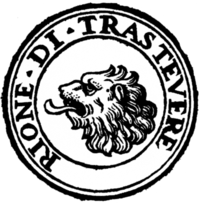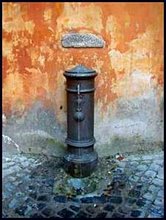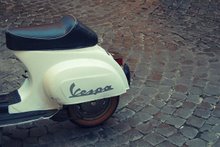Viengheno a ddiseggnà cco li pennelli,
Tra ll’arberetti, le crosce, li fiori,
Le farfalle e li canti de l’uscelli…”
(from “Riflessione immorale sur Culiseo” di G. G. Belli Poeta romanesco 4 settembre 1835)
(from “Riflessione immorale sur Culiseo” di G. G. Belli Poeta romanesco 4 settembre 1835)
Colosseo and the Anfiteatrum Flavium...could they be the same?
Did you ever ask yourself why, starting from a no-well known time in the story, people started to call it Colosseo?
 The "Anphitheatrum Flavium" was built by the Emperor Vespasiano in the 72 d.c. According to the most known legend the name Colosseo came from the enormous statue, called the “Colosso di Nerone” (more than 35 meters high!), built near the Anphitheatrum Flavium and representing the Emperor Nerone. Nowdays there is a modern base made in "tufo" at the entrance of the metro line A Colosseo reminding us the original position of the ancient Colosso. This picture would be an ideal re-construction of the Colosso di Nerone (if you want to have the exact chronology of the Colosseo click here).
The "Anphitheatrum Flavium" was built by the Emperor Vespasiano in the 72 d.c. According to the most known legend the name Colosseo came from the enormous statue, called the “Colosso di Nerone” (more than 35 meters high!), built near the Anphitheatrum Flavium and representing the Emperor Nerone. Nowdays there is a modern base made in "tufo" at the entrance of the metro line A Colosseo reminding us the original position of the ancient Colosso. This picture would be an ideal re-construction of the Colosso di Nerone (if you want to have the exact chronology of the Colosseo click here).This is what the story transmitted us....but a no less credited legend transmitted us by Armannino Giudice tell about the Colosseo as a temple lived by demons! According to the legend the clergyman of this temple at the end of every ceremony addressed to the adepts with the question "Colis eum?" (do you adore him? referring to the devil); the name Colosseo would derive from it (colis eum = colosseo). Probably this legend has its ground of trouth if later Pope Clemente affixed a big wooden made cross on it and after him Pope Benedetto XIV decided to exorcised it and consacre the monument to the memory of Jesus and his passion.
This story lasted over a long time, so lot that also Benvenuto Cellini speaks about it in one of his novel regarding his best friend Agnolino Gaddi. He was so terrified by the demoniac manifestations showed in the Colosseo that..."fece una strombazzata de coregge con tanta abundanzia de merde, la quale fece piu della zaffetica... (zaffetica is a sulphur mixture used by exorcist to drive away demons)" and devils run away asphyxiated!
The legends apart the first time that the writing name of "Colosseo" appeared was on an inscription of the venerable Beda in the VII century:
Quamdiu stabat Colyseus Stabit et Roma;
Quamdo cadet Colyseus Cadet et Roma;
Quamdo cadet Roma Cadet et mundus.



















